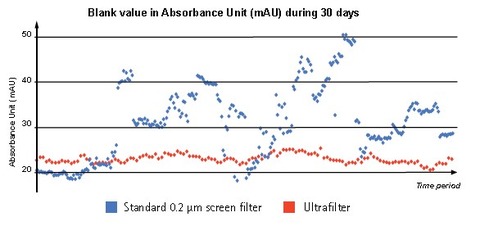
Bacterial contamination can be a major problem in biomedical laboratories and so it is important to address the question of water purity.
Clinical analysis instrumentation is at the heart of a biomedical laboratory’s function and so bacterial contamination cannot be countenanced. In order to operate at maximum efficiency, and to prevent corruption of results, every aspect of equipment use needs to be carefully overseen and this includes ensuring optimum water purity.
A number of potential bacterial hazards exist, including gram negative bacteria such as Ralstonia pickettii, Pseudomonas aeruginosa, Sphingomonas paucimobilis and Caulobacter crescentus. Bacterial levels as high as 105 – 106 can be found, contaminating manifolds, reagent needles, on-board reservoirs as well as the samples themselves.
A high-performance water purification system is therefore a sensible option for any modern biomedical laboratory. Such systems need to have a design that incorporates a UV lamp, specific reservoir, recirculation loop, an effective storage tank and virgin resins. There must also be an adequate and effective sanitisation procedure and efficient final filter selection.
Further information on water purification and bacterial contamination can be found on the attached file, allowing you to maximise usage of your clinical analysis instrumentation and provide water with levels below 10cfu/ml compiling with the most stringent of regulations.





